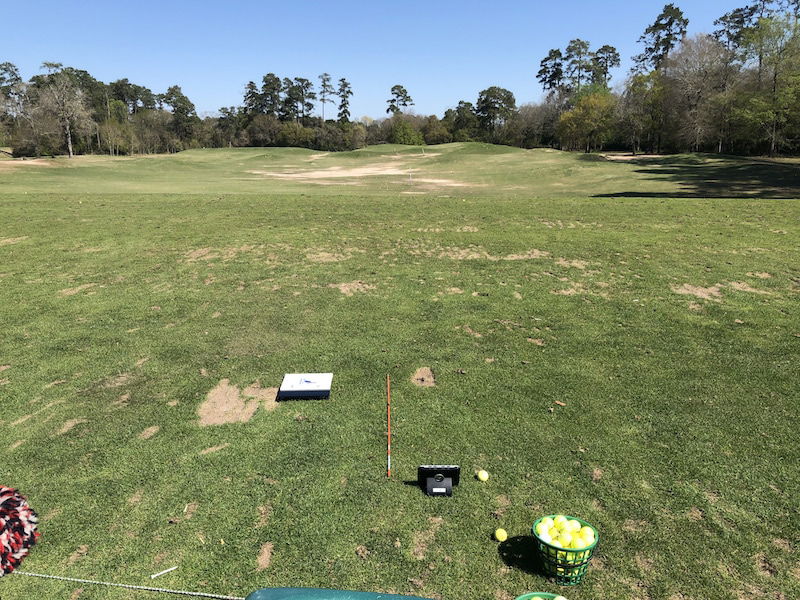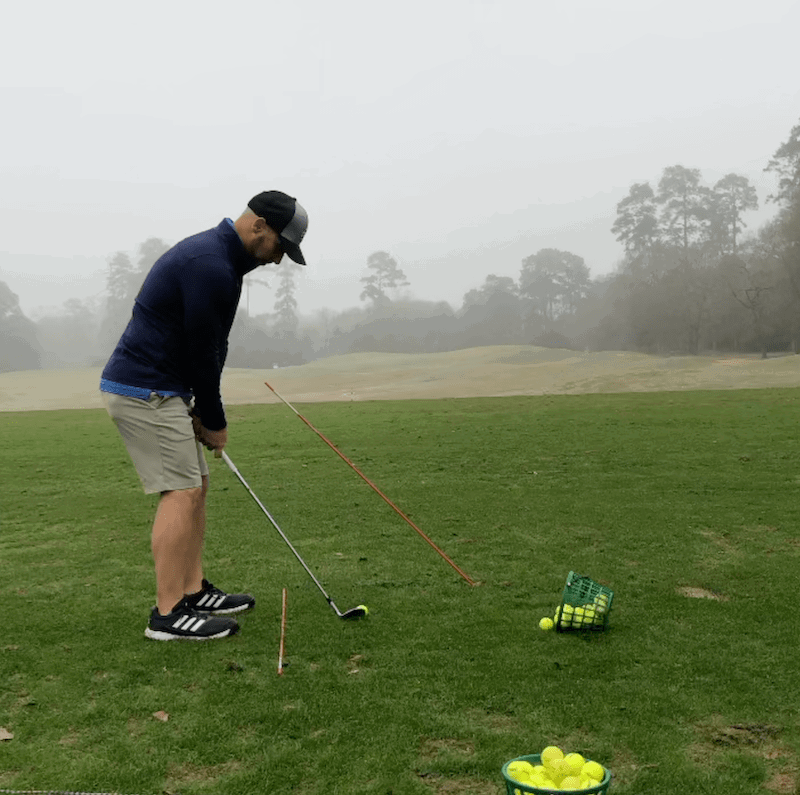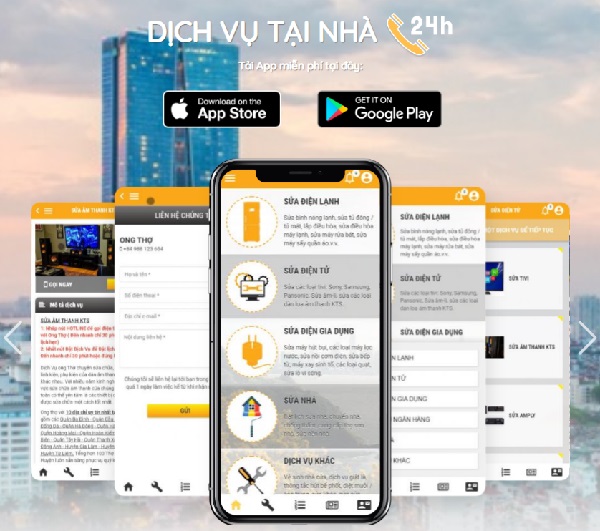9 Essential Driving Range Tips For Beginners & Golfers Of All Levels | April 2023

Here are my top 9 driving range tips for beginners and seasoned golfers.
Improving at golf means improving at golf practice. Most golfers I see at any driving range spend too much time beating balls without clear purpose or benefit.
This, fortunately, does not describe me…anymore. I hit the range with focus and purpose. I get in. I do my work. I leave.
I’ve researched and put into action what the best players do and what the best instructors teach on how to practice golf to maximize performance on the course
With that in mind, these are my best driving range tips for beginners and seasoned golfers..
Mục Lục
Golf Driving Range Tips for Beginners
1) Warm-up properly
I’m referring to two types of warming up.
- Warm up your body: get your muscles warm and blood flowing to the parts of the body we are about to use
- Warm up your swing: get your swing coordinated and synced up
Warming up your body is more important the older you get. I’m 51 and my muscles aren’t automatically warm and pliable like they were even deep into my 40s.
There are three areas I concentrate on in my warm-up: 1) shoulders, 2) mid and upper back, 3) hips and thighs.
Warming up my golf swing was the only warming up I did for the majority of my golfing life. This is not ideal, obviously.
I warm up my golf swing by starting with my lob and/or sand wedge for the first 20 to 30 shots. I start with easy half swings, then to three quarter swings, and progress to full shots. I max out at about 80% swing speed for wedges.
Feel free to stay with wedges longer if this is a part of your game you are trying to improve. I hit far more wedges during my practice session than any other clubs.
2) Every Shot Must Have A Purpose
If the purpose of golf practice is to get better, and it is, you need to be thoughtful about what you are doing. This applies to block or skill practice and playing focus practice.
Focus is a skill that needs to be practiced. You can’t do that if you drag ball after ball and hit without clear intentions for each shot.
- What’s your target?
- What’s your shot shape?
- Are you hitting the ball high, normal, or flighting it?
- Full swing? Three quarter swing? Half swing? Etc.
Determine all the above, then go through your full pre shot routine. This is how you practice playing golf.
You can take less time, hit fewer golf balls, and help your game a lot more.
3) Keep Your Bucket of Balls Just Out of Reach
This tip pairs with #2 above. I always, Always keep my practice balls a step or two away so it is impossible for me to stand in one spot and drag ball after ball and fire away. You learn nothing but bad habits by beating balls without a clear purpose for each swing.
Did that shot come off as you wanted? Yes? Great! No? Why?
You need to reset for every shot. Check your grip. Check your posture. Check your alignment. Etc.
Really want to dial it in? Go through your pre shot routine before every shot. Really make each one count.
4) Set Up a Practice Station

The bare minimum you should have is an alignment stick or two on the ground so you know exactly where you are aiming. There’s a reason every PGA pro has alignment sticks in his bag.
Mike Malaska suggests using 3 alignment rods to set up your practice station every time you practice. One pointed at your target. One to align your feet and body. One 10 yards in front of you on your target line.
5) Don’t Go Full Speed When Working On Something
This is something I learned listening to Tommy Fleetwood and Mike Malaska.
We all have a tendency to go full-bore and hit the ball as far as we can on every swing. But, this isn’t how we improve or make swing changes.
They suggest going half-speed or three-quarter speed (at most) when you are trying to groove a swing fix.
It’s exceedingly difficult to feel what you need to feel and move the way you need to move when you are trying to kill the ball.
Another way to think of this is to go back only halfway or three-quarters in your backswing. Tommy says to go chest-high in the backswing to chest-high in the follow through.
You can work your way up to full swings, but it’s best to groove your new swing first.
6) Practice One Thing at a Time (Block Practice)
We all have plenty of things we need to work on in our swing. Especially as amateurs. The trick to rapid improvement is to concentrate on one at a time.
Often, fixing one swing flaw will fix one or more other flaws.
Point is, pick one drill or weakness in your game per session and give it your full attention.
7) Take the Course to the Driving Range
My friends and I occasionally play a game on the range. We’ll take holes from the course we play and “play” it on the driving range.
We pick out a “fairway” on the range. We pick the proper club to tee off with. Driver, 3-wood, etc. We try to hit our tee shot in play, and hit whatever club is called for next.
This is where the concept of the “Think box” and “Play box” come into play. Two terms popularized by Vision 54. It goes like this.
Stand behind your ball around 6 feet or so. This distance isn’t crucial, but you don’t want to be in the hitting area. Formulate your entire plan for this shot and only this shot. Imagine your ball flight. Imagine pure contact. Rehearse a swing or two exactly the way you want it to happen for real. Then.
Cross over an imaginary line about 3 feet from your ball and enter the Play box. No swing thoughts. Just you and the target. Set up and go.
Each shot gets full attention. Shot shape. Starting line. Where we want it to finish. Everything. We are trying to simulate on course conditions so our game will translate from practice to play easier.
8) Practice Skill Development or Playing Focus
It’s ok to practice skill development and playing focus in the same practice session, but never at the same time. They must be distinct.
We all should be improving some skill in our golf game. (Driving. Iron play. Wedge play. Hitting a draw. Hitting a fade. Better contact. etc.) This is where we set up stations and focus on our one thing for the session.
We should devote at least equal time, if not more, to playing focus. The goal is to take whatever skills we have and maximize them with proper focus and preparation.
We leave swing thoughts behind, focus on our target, and let the swing just happen. We are testing our skills practice.
9) Randomize Practice
When not doing focused block practice: You should be switching clubs and targets for every shot. This is the fastest way to take improvements on the range to the course. It is the only way I practice these days and I wish I had figured this out years ago.
My session will go something like this:
I’ll pull driver through 5-wood to simulate my tee shot. I go through my preshot routine. Hit the ball and put the headcover back on. I’ll choose the next club I want to hit. This can be a wedge through a long iron. I hit that shot after going through my preshot routine. I’ll clean the club and put it back in my bag. I’ll pull a wedge and hit a recovery shot if I hit the previous shot poorly.
Rinse. Repeat. I’m not picturing or playing a particular hole for this practice. I’m choosing targets on the range and firing at them. But randomized.
What to do next?
Put these driving range tips into practice the next time and every time you hit the range. They don’t cost anything. They aren’t complicated. They just work. And, fast.
Now that you know how to use the driving range effectively, it’s time to get that short game in shape.
Check out my best short game drills for a few quick wins.















![Toni Kroos là ai? [ sự thật về tiểu sử đầy đủ Toni Kroos ]](https://evbn.org/wp-content/uploads/New-Project-6635-1671934592.jpg)


